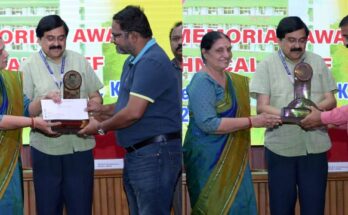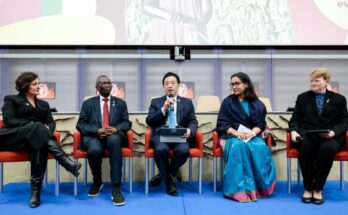Plant-based diets have been recommended for better planetary health also as it would be more sustainable with lower environmental impacts and improving food and nutritional security of the generations. There is an urgent need to transform current diets for improving health of population and to achieve equity in benefits at social, economic and environmental levels. Furthermore, the ongoing COVID-19 pandemic has posed serious challenges to the humanity across the world. Scientists and researchers are working round the clock to understand its effects and to find an effective solution. In this backdrop, it has become mandatory for us to take every possible measure to keep the coronavirus away and boosting our immunity is one major weapon. There is a need to take proper diet to fight the virus as well as be well-prepared for the health challenges that are clearly foreseen ahead. This underlines the importance of nutritional dietary guidelines. We must embrace innovations and technological solutions to address the nutrition-related problems.
Vitamins such as A, B6, B12, folate, C, D and E and trace elements like zinc, copper, selenium, iron are known to be crucial in bolstering immune system as they have antiviral and antibacterial properties. Amino acids and fatty acids too are important constituents of the healthy diet. Fresh fruits and vegetables besides grains, nuts and animal products are the best source of these nutrients. The United Nations’ (UN) efforts for global nutrition seek to eradicate micronutrient deficiency problems.
It is important to have nutrient-rich, balance diet ensured for masses as a robust immune system will keep the population healthy and reduce medical costs incurred to treat diseases caused due to malnutrition. This poses challenges for scientists and policymakers to secure better nutrition at affordable prices for poor communities. Millions of people around the world are affected due to malnutrition or inadequate nutrition intake. Biofortification is the process that helps increase the density of nutrients in the foods we intake routinely. We can biofortify many crops including fruits and vegetables using genetic engineering. Genome editing, a powerful tool, holds a great promise.
In many countries, the focus of agriculture research is on improving crop production and productivity in order to provide adequate and affordable food to burgeoning populations. And new technologies have made this possible. However, now the focus needs to be shifted to nutritional aspects. Enhancement of micronutrients can be achieved in convenient, and faster way by making use of the genome editing tools. Fresh fruits and vegetables are rich sources of micronutrients and bioactive phytochemicals but they are perishable and sensitive to biotic as well as abiotic stresses. Genome editing can lower post-harvest losses by improving shelf life of the produce. The advance tools of gene editing enable incorporation of traits the same way as through conventional plant breeding techniques in a more efficient manner.
Conventional plant breeding techniques are labour-intensive and take years to show the results. On the other hand, gene editing facilitates to obtain desirable traits in the plants quite faster and with high efficiency and precision, thus, improving plants for multiple qualities, economically. There are a few gene editing tools, of them, the clustered regularly interspaced short palindromic repeats (CRISPR) method appears to be the most feasible, cost-effective and versatile tool to allow precise and efficient editing of plant genomes.
According to the Food and Agriculture Organisation (FAO), over 820 million people did not have enough to eat while 26.4 percent of the world population – or about 2 billion people did not have regular access to safe, nutritious, and sufficient food in 2019. These people belong to underdeveloped and developing countries. Gene editing technology has potential to revolutionise crop improvement, with a focus on local crops. Efforts must be taken to create awareness about the technology and quell unfounded doubts people have about genetic engineering. People, policymakers must be convinced about how the gene editing is a golden opportunity to enhance human nutrition, besides achieving higher yields and greater tolerance of unfavorable growing conditions.
The gene editing techniques can complement the ongoing efforts to provide micronutrient supplements, fortified food and appeals for eating more diversified food. Farmers in rural areas, which are difficult to access by other mechanisms, can breed new crop varieties with higher nutrition content, thus, ensuring a reliable source of micronutrients for the local populations. For developing world, the major area of research is food security, followed by nutrition security. Modern plant breeding methods and gene editing offer favourable conditions to increase the micronutrient content and enhance the nutritional value of food that people eat daily. Adoption of gene editing and gene edited products can be achieved by disrupting the current bottlenecks to progress for achieving the nutritional security by making intensive efforts for public awareness and acceptance, and enabling policies by the respective governments.
(Dr Rishi Kumar Tyagi is the coordinator of Asia-Pacific Consortium on Agricultural Biotechnology and Bioresources (APCoAB), APAARI, Bangkok, Thailand. Views expressed in the article are author’s own.)





